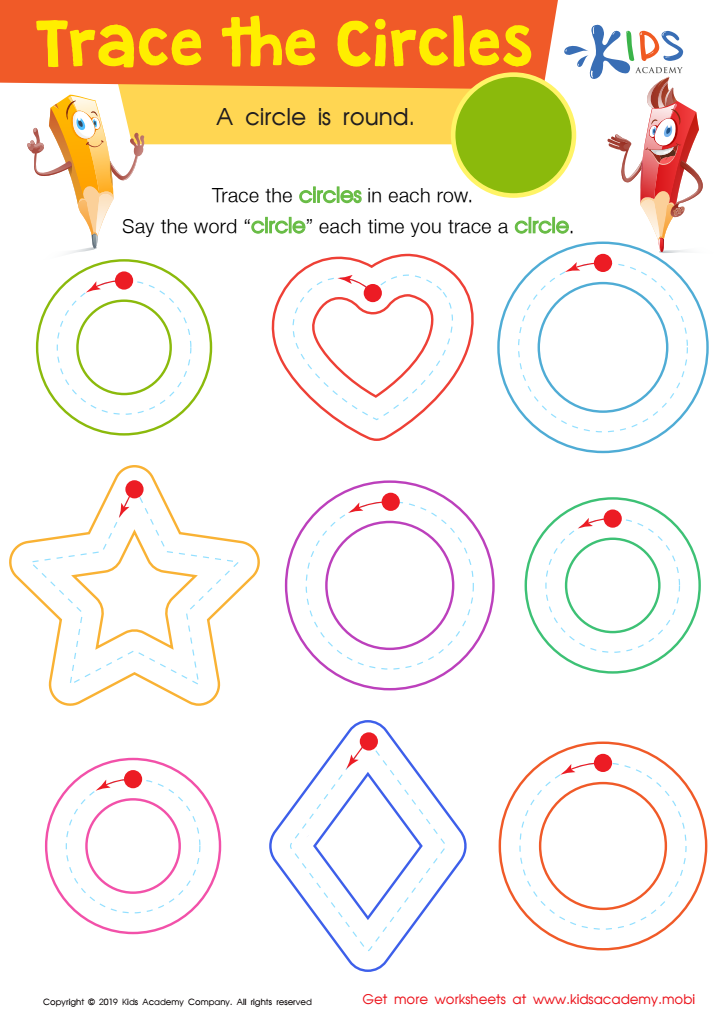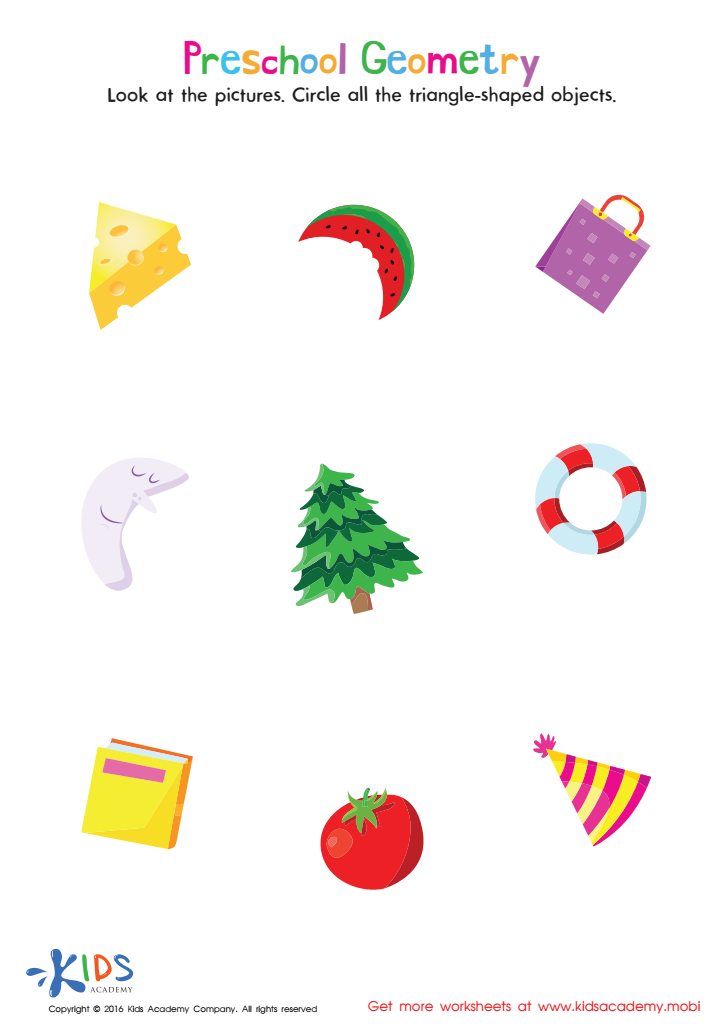Hand-eye Coordination Geometry Worksheets for Ages 4-5
3 filtered results
-
From - To
Explore our engaging Hand-eye Coordination Geometry Worksheets designed specifically for children aged 4-5! These interactive activities not only introduce early geometry concepts, such as shapes and spatial awareness, but also enhance essential hand-eye coordination skills. Perfect for at-home learning or classroom use, our worksheets feature colorful illustrations and fun exercises that challenge young learners to trace, color, and match geometric shapes. By combining physical activity with educational content, children will develop their fine motor skills while enjoying their learning experience. Download our free worksheets today and watch your little ones gain confidence in their geometric understanding and hand-eye coordination abilities!


Trace The Circles Worksheet


Trace and Draw More Shapes Worksheet
Hand-eye coordination is crucial for children's development, particularly in ages 4-5, as it significantly influences their learning abilities, physical skills, and everyday functioning. When children engage in activities that promote hand-eye coordination, such as drawing shapes, assembling puzzles, or playing simple sports, they simultaneously develop their spatial awareness and geometric understanding.
Understanding geometry at this age lays the foundation for mathematical concepts later in life. When children recognize shapes and learn to visualize space through their movements, it builds their analytical thinking and problem-solving skills. Also, activities that enhance hand-eye coordination often promote fine motor skills, which are essential for tasks like writing and self-care, contributing to independence.
Moreover, parents and teachers should realize that incorporating hand-eye coordination training into playful activities increases engagement and motivation among young learners. This not only enriches their academic experience but also fosters a love for learning. By emphasizing geometric concepts through playful interactions, adults can support children's cognitive development, preparing them for future educational demands and fostering overall confidence in their abilities. Thus, promoting hand-eye coordination is not just an essential skill but also integrates directly with foundational geometric concepts, enhancing children's holistic growth.
 Assign to My Students
Assign to My Students































